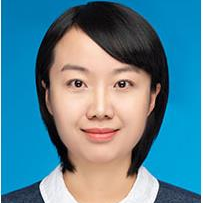Multi-Sensor Fusion for Soil Monitoring
A special issue of Sensors (ISSN 1424-8220). This special issue belongs to the section "Environmental Sensing".
Deadline for manuscript submissions: closed (20 March 2023) | Viewed by 17947
Special Issue Editors
Interests: soil spectra and modelling; sensor fusion
Interests: sensor-data fusion; soil spectroscopy; proximal soil sensing; digital soil mapping; sustainable agriculture
Special Issues, Collections and Topics in MDPI journals
Special Issue Information
Dear Colleagues,
Fast and accurate measurement of soil properties is important for precision agriculture and food safety. A variety of soil sensors have been applied in order to determine soil properties rapidly during the past several decades. Spectroscopy in particular has increased in popularity because it is rapid, timely, cost-effective, non-destructive and straightforward. With the development of sensors, more and more portable sensors has been applied alone or in combination for soil monitoring.
In this Special Issue, we are finding and collecting original manuscripts that fusing proximal soil sensors including vis-NIR, mid-IR, PXRF etc. for soil properties estimation. We are also seeking manuscripts that improve estimation accuracy based on field conditions or use machine or deep learning methods for soil estimation.
Dr. Dongyun Xu
Dr. Wenjun Ji
Guest Editors
Manuscript Submission Information
Manuscripts should be submitted online at www.mdpi.com by registering and logging in to this website. Once you are registered, click here to go to the submission form. Manuscripts can be submitted until the deadline. All submissions that pass pre-check are peer-reviewed. Accepted papers will be published continuously in the journal (as soon as accepted) and will be listed together on the special issue website. Research articles, review articles as well as short communications are invited. For planned papers, a title and short abstract (about 100 words) can be sent to the Editorial Office for announcement on this website.
Submitted manuscripts should not have been published previously, nor be under consideration for publication elsewhere (except conference proceedings papers). All manuscripts are thoroughly refereed through a single-blind peer-review process. A guide for authors and other relevant information for submission of manuscripts is available on the Instructions for Authors page. Sensors is an international peer-reviewed open access semimonthly journal published by MDPI.
Please visit the Instructions for Authors page before submitting a manuscript. The Article Processing Charge (APC) for publication in this open access journal is 2600 CHF (Swiss Francs). Submitted papers should be well formatted and use good English. Authors may use MDPI's English editing service prior to publication or during author revisions.
Keywords
- proximal soil sensing
- soil properties
- multi-sensor fusion
- spectroscopy
- machine learning







